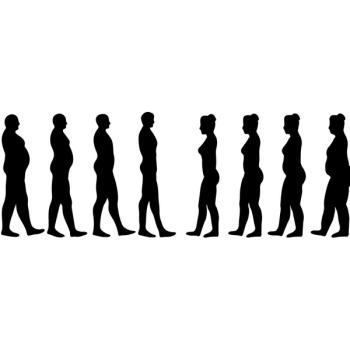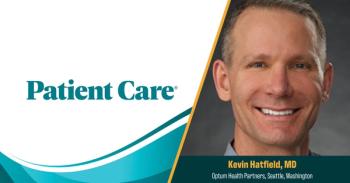
Heart Disease and HIV: Updates from the Conference on Retroviruses and Opportunistic Infections
Cardiovascular disease is now the cause of death for 10% of HIV-positive patients. Why this happens and how to prevent or treat it remain unclear, but research presented at the CROI conference offers insights into potential solutions.
The revelation that a premature infant had been cured of HIV with early, aggressive treatment dominated the news during the 20th Conference on Retroviruses and Opportunistic Infections (CROI), held in early March. This exhilarating feat overshadowed one of the hottest topics at the meeting: heart disease comorbid with HIV infection.
Overall, cardiovascular disease (CVD) is now responsible for approximately one death in ten among HIV-positive patients, a proportion likely to increase as more patients live longer with the disease.1,2 HIV is independently associated with increased risks for sudden cardiac death, clinical heart failure, cardiomyopathies, and acute myocardial infarction (MI).3,4
Several key questions need to be answered, according to Matthew S. Freiberg, MD, chief of the section of Chronic Disease Translational Research and Associate Professor of Medicine and Epidemiology at the University of Pittsburgh: How do we predict the occurrence of cardiovascular disease in patients with HIV? How do we prevent and treat it? And how does it happen? Research presented at CROI may help move the field towards some answers.
Risk Assessment
According to a
Meanwhile, an
There is need to “revisit the question” of whether the Framingham Risk Score commonly used to predict 10-year CVD risk is robust enough to capture the risk in people with HIV, observed Dr. Freiburg. His recent paper in JAMA Internal Medicine (
The issue of heart failure in this population is growing in importance, he added, given the combination of risk factors such as HIV, ART, hypertension, diabetes, alcohol use, and acute MI. To learn more about
“Heart failure is going to be an important CVD outcome in this population as people with HIV age,” Dr. Freiburg said. He added that primary care clinicians should discuss risk factors for HF with their HIV-positive patients and treat those risk factors using guideline-driven care.
A risk factor correlated with CVD but not assessed with the Framingham Risk Score is the coronary artery calcium (CAC) score. A
Preventing CVD in HIV-Infected Patients
Although it is clear from earlier studies that greater viral suppression reduces the risk of CVD, it is still unclear whether new guidelines for preventing and treating CVD will be necessary for this population, said Dr. Freiberg. For instance, during the panel he moderated on that topic the question arose whether current blood pressure goals for people with diabetes should be applied to those with HIV, given that HIV-infected people may also be a high-risk group for AMI. As of yet, he said, “there is no clear data. But we should be looking at this more closely.”
The study that found
“The benefits of aspirin use can be difficult to capture because it is an over-the-counter drug,” he noted, “and there is always the possibility of confounding by indication.” Clearly the issue deserves further study, he added.
Why the Higher Risk in HIV?
The leading hypothesis to explain the increased CVD risk in HIV patients places the blame on increased inflammation. But the word “inflammation,” said Dr. Freiberg, is itself inflammatory. Only with a clearer understanding of the roles of the innate and adaptive immune system and the importance of individual inflammatory mediators in the CVD risk will researchers be able to identify new targets for treatment.
Several reports at CROI rose to the challenge. One [http://] found a statistically significant correlation between
Is the immune system altered by HIV in a way that triggers cardiovascular disease? “It might be,” said Dr. Freiburg. “There is compelling data but it’s far from definitive.” Meanwhile, he advised, continue with the current standard of care: Initiate ART as appropriate, with a goal of viral suppression, and (also very important) address cardiovascular risk factors as recommended by current guidelines.
References:
References
1. US Dept of Health and Human Services. Clinical Practice Guideline Update: Treating Tobacco Use and Dependence. 2008 Update.
2. Panel on Antiretroviral Guidelines for Adults and Adolescents. Guidelines for the use of antiretroviral agents in HIV-1-infected adults and adolescents. 2012; http://aidsinfo.nih.gov/guidelines.
3. Zanni MV, Grinspoon SK. HIV-Specific Immune Dysregulation and Atherosclerosis. Current HIV/AIDS reports. 2012
4. Tseng ZH, Secemsky EA, Dowdy D, et al. Sudden cardiac death in patients with human immunodeficiency virus infection. J Am Coll Cardiol. 2012;59(21):1891-1896.
5. Burkholder GA, Tamhane AR, Salinas JL et al. Underutilization of aspirin for primary prevention of cardiovascular disease among HIV-infected patients. Clin Infect Dis. 2012 Dec;55(11):1550-7. doi: 10.1093/cid/cis752. Epub 2012 Aug 31.
Newsletter
Enhance your clinical practice with the Patient Care newsletter, offering the latest evidence-based guidelines, diagnostic insights, and treatment strategies for primary care physicians.





















































































































































































































































































